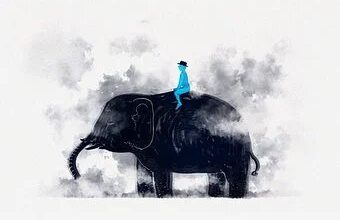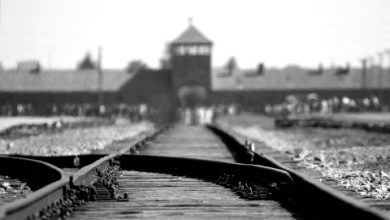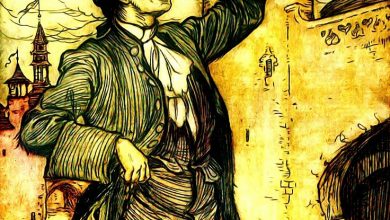
Stability by Phillip K. Dick is a short story written in the third person, told by an unnamed narrator. It is careful with tenses, as the story balances elements of time and time travel. Further, there are also several body-less voices that play a role in the plot. Dick uses dialogue, imagery, symbolism, and description of sensory reactions to create a vivid image of the situation. This story is also set in a sort of dystopian universe– however, there is no specific section dedicated solely to the explanation of this world. Instead, Dick applies small hints, interactions and lines gradually to slowly build the image of the universe these characters live in. The main themes are time, stability, control, and freedom. To elaborate on freedom and control, which are overarching throughout the story, we see elements of control over both mind and body- sometimes even separately, Dick also explores fear and conformance through the various structures and reactions present in this dystopia.
Stability | Summary
The story begins with a man named Robert Benton spreading his wings and flying across the air. When he saw the lights of the control office blink at him, he landed gracefully on his feet, on their roof, walking till the main office. He is greeted by the Controller, who asks him to take his wings off and sit. When Benton chooses the best chair, the Controller notices that he values comfort. He then tells Benton that stability is the watchword- civilization has been climbing for centuries, and by the law of nature, it must either fall backward or continue growing. However, it seems they have broken the law.
One hundred years ago, when human ingenuity had been running dry and only two inventions had been filed, the Council came up with a solution- stabilization. Of course, there was huge chaos when it was first introduced, from stock market crashes to riots to wars- until the world settled into a constant, rigid state which could not move forward or back. Every year, individuals took difficult examinations to make sure they were not falling behind. People received fifteen years of intense education. And those who could not keep up simply vanished. All inventions were checked by the Council to make sure they would not alter the Stability.
That was why the Council rejected Benton’s invention. Benton had quietly said, much to their confusion, that he had no invention. They showed him the document, his name and fingerprint on the model, but Benton was confused- he had no idea what it was, and he was sure he never submitted anything of the sort. To find out more about it, he headed to the Office. When the Controller called to him to watch out, as there was a heavy penalty for altering stability- either being arrested or being sentenced to death- Benton simply responded that it had already been upset.
In the Office, he asked for all the information about inventions under his name. It contained the plans and a small working model. After verifying his identity, he collected the items and headed back home. While in the taxi, he realized he forgot his wings but decided it was too late to go back and get them. He settled inside his “considerations” room to observe the object. He was unable to understand the diagrams, so he simply clicked the “on” button of the switch of the machine sample, and suddenly, the room shook and moved like jelly. He was falling for an immeasurable time through a tunnel, landing somewhere he did not know. He ran to the top of a hill, an ache in his feet, and stared at nothing but a vast land of emptiness. Then, he heard a voice– seemingly from thin air, as nobody was there.
The voice told him not to pick ‘it’ up, referring to a glass globe that seemed to appear from nowhere. It warned Benton that if he did, he would destroy Stability. Benton does not heed the voice’s advice, though it continuously tells him that it contains evil things, and his mind is getting swept away by it- the globe wants him to pick it up. But the globe is warm, and Benton holds it closer. The voice explains that it was the guardian of the globe and that Benton was brought there through time, and once again tells him to leave it as he found it.
But the globe urges Benton not to listen to the voice, instead to pick up the time machine. It orders him what to do, and he is rushed into the whirl of time again. Before he can stop at his final destination, however, he stops to visit the Controller and give him the time machine, telling him he’d like his invention to be checked with the Stability Council. When asked for the documents and plans, Benton pulls out everything he had collected earlier. Then, he left.
The scene then switches to a conversation between the Control Council, who unanimously agree that Benton must have been using the time machine, remembering the way he appeared in front of them twice- once assured and once confused. They decide to visit him. The globe, sensing this, tells Benton not to move. It tells him that the difficulty- getting him through time- has passed, and they are almost free from the confines of the globe. Before Benton can ask any more questions, the Council enters through the back door.
The Council searches his house for the time machine, but it has ceased to exist. The Controller then sternly explains the importance of stability, and what can happen if it is broken. As they are about to leave, Benton takes out the globe and shows it off as a paperweight. While the other members are uninterested, the Controller recognizes the city inside the globe and remembers an ancient legend. A cursed city, so evil that God had to trap it into a globe to contain it. Its only escape is if the glass was smashed.
The Council immediately tried to take the glass ball from Benton, but with the globe’s voice in his ears, he managed to smash it to the floor despite their struggles. Then, he drifts off into sleep. He awakens to voices. The city inside the globe vanished and grew, and the contents were set free. Metal machinery seemed to grow in size right in front of him. He saw pale faceless men tending to their machines, sweating and drooping. He felt a compelling force pushing him towards the city. For a moment, he thinks he can recognize the faces of the other men, as they look vaguely familiar. But the memory passed. Along with the rest of the men, he marched towards the waiting machines to tend to them, and hoping for a bonus- after all, he had been taking good care of his personal machine.
Stability | Analysis
Stability begins with a man named Robert Benton spreading his wings and flying across the air. The first element to note, which is a clear indication of the world they live in, is that the main character (Robert Benton) owns wings. From the way the wings are repeated throughout the story, we may assume that it is a normal means of transport for the citizens. Hence, we can see the type of world they live in- technologically advanced in nature, which alludes to the strictness they put on not falling backward. The second hint towards their dystopia is the fact that they have a Control Office and a Controller. While it is quite usual to have a leading or authoritative body to maintain the regulation of an area, the name- “Controller”- creates a feeling of complete power and hierarchy.
Stability symbolizes more than just the systematic working of their world- it symbolizes the human greed for conformity and the safety one feels with security. From the rigorous examinations, the citizens must take every year to ensure they do not fall behind, to the intensive fifteen years of education, it is clear that the Council expects a certain standard from their citizens to maintain this stability. Their fear of it being altered is clear in the severity of the punishment- arresting or death. The planned methods which they follow to lead their everyday life, and the rules imposed to ensure that no one steps out of the boundary, highlights the theme of conformity. Everyone is expected to behave more or less the same way and adhere to the same social norm as everybody else.
It is interesting to note the invention culture in this story. Though, of course, they are not allowed to make inventions that alter the Stability, it does seem common enough to make inventions- to the point where there are councils to check it and offices where prototypes are kept. We may wonder about ideas of creativity here. Coming up with an idea and creating a machine for it is indeed creativity- however, they are confined within narrow boundaries. Hence even their creativity is given a limit. We may wonder whether these norms such as inventing things give the citizens a false sense of freedom and imagination- and the checking council is so ingrained in their system that it does not seem like much more than an obstacle, let alone a boundary. Here we observe the shaping of people’s thoughts and mindsets to fit societal norms.
Benton is the only person to upset Stability- he does not heed the voice of the Guardian, which tells him not to pick up the globe. Instead, he is completely influenced by the evil of the globe. Here, we see themes of control, power, and freedom. The voice of the Guardian is supposed to have power over the globe, yet it was not enough in the face of human greed. Similarly, the globe took complete control over Benton- both mind and body. The fact that, though he had to move his body, he did not even realize he was doing so was a loss of his physical control. While his sudden ability to say the right things and work with machines comes from the loss of control of his mind. He also loses the ability to make rational decisions, as can be seen by the way he is progressively more drawn to an item as untrustable as a globe- he no longer has true freedom. The voice in the globe mentions it had been waiting for him- we may wonder how they pinpointed him, and why.
We may also wonder whether Benton ever had true freedom in the first place. After all, living in such an intensive regime is not freedom, either. Yet she does not seem to have any particular problem with this. His easy submission to voices of greater power is a recurring theme in this story. First with the globe, and then with machines. The globe seemed to have more power than the Controller, hence it was the globe Benton followed. The globe symbolizes control and power differences. As we see the trouble the Control Council takes to stop Benton from dropping the globe, we know it is for two reasons- to stop the curse from returning and to maintain stability. Though we wonder whether stability is even a good thing for an individual- it may curate a developed world, but the people will be somewhat brainwashed into one single line of thinking- it is certainly better than the former option.
As Benton travels through time, we notice the themes of past and present. We may note it as a reminder that one is constantly affected by actions of their past. Here, the actions of the past Benton lead to the release of the cursed city. As the globe opens and the contains are released, everyone seems to have been transported to a worse dystopia- a place where everyone is given their own personal machine, and their life’s job is to mindlessly care for it. It is important to note that Benton submits to the new city very easily, with no questions. This is the same way he submitted to the globe’s voice when he first heard it. It is possible that his easy submission to more powerful, more fearful, or more interesting phenomena is a reason the globe chose him to be the one to break them open.
The fact that Benton doesn’t recognize any of the faces in the new city as they work with machines, but for a brief moment wonders if he’s met them before, is symbolic of facelessness in a mass workforce. One may put in an incredible amount of effort, but while working in any mass business, their faces are not remembered, nor are their names given individual credit- they are part of a group. Here, all the men who tend to their machines are pale and tired, but they have no individuality- they’re described as faceless. The lack of individuality in order to conform to society links back to a point earlier in the analysis. As usual, the narrator does not question anything- he simply follows the crowd to tend for his machine. The word “his” is highlighted in the sentence “For had he not been tending his machine faithfully? Which is a key element of the conclusion. The sentence structure as a standalone makes it look as if Benton is in charge of the machine. As if he is taking care of that, and it is under his power. However, on looking at a broader context, we understand that it is completely vice-versa: it is not the man that looks after the machine, that is simply the image we (and possibly they) get. In reality, it is humans who are already slaves to machines.




